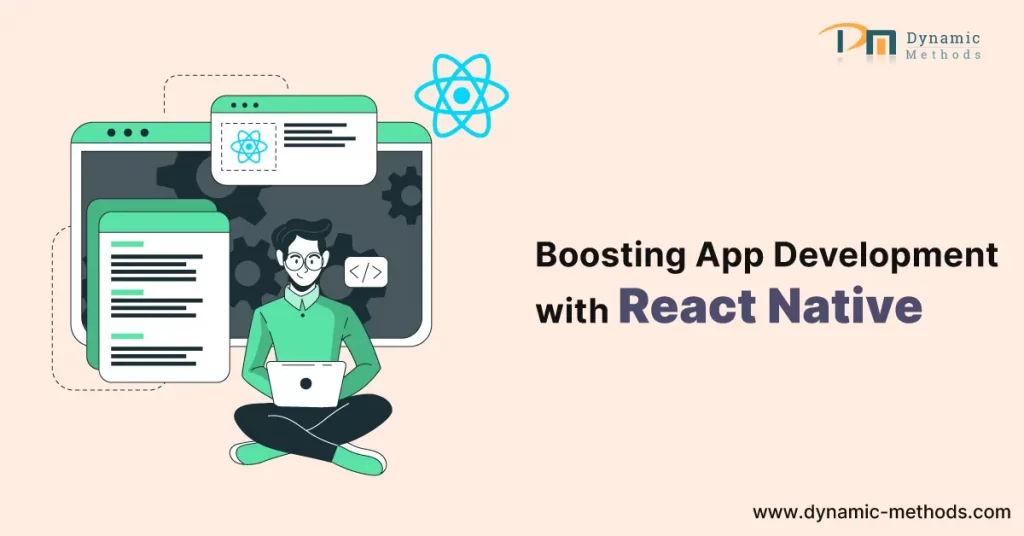
In the rapidly evolving landscape of mobile app development, React Native has emerged as a game-changer. Its ability to enable cross-platform development while delivering native-like performance has made it a popular choice among developers and businesses alike.
However, to truly harness the full potential of this powerful framework, understanding and implementing its advanced features are essential.
In this in-depth article, we will delve into the world of supercharging app development with React Native’s advanced capabilities. We will explore best practices, tips, and tricks that will elevate your app development process to new heights, delivering top-notch experiences to your users.
Supercharging Your App Development: Advanced Features of React Native
In this section, we will explore the various advanced features of React Native that empower developers to build powerful and dynamic mobile applications. Let’s dive in!
1. High-Performance Animations with Animated API
The Animated API in React Native unlocks the potential to create smooth and engaging animations that enhance the user experience. By using declarative syntax and interpolation functions, developers can easily animate components, gestures, and transitions. Embracing this feature will make your app visually appealing and set it apart from the competition
2. Leveraging Native Modules
React Native allows developers to bridge the gap between native code and JavaScript using native modules. By integrating native modules, you gain access to platform-specific functionalities, hardware features, and third-party SDKs.
This capability opens up a world of possibilities for enhancing your app’s capabilities and providing a seamless user experience.
3. Optimizing Performance with Hermes
Hermes, an open-source JavaScript engine, is designed to optimize the performance of React Native apps. It achieves this by optimizing memory usage and startup time, resulting in faster and more responsive applications. Integrating Hermes into your project ensures your app performs efficiently even on low-end devices.
4. Code Reusability with React Native Web
React Native Web extends the power of React Native to web platforms, enabling you to share a significant portion of your codebase between mobile and web applications. This feature promotes code reusability, reduces development time, and ensures a consistent user experience across multiple platforms.
5. Implementing Push Notifications with Firebase Cloud Messaging
Enhance user engagement and retention by incorporating push notifications into your React Native app. By integrating Firebase Cloud Messaging, you can send targeted and personalized notifications to users, keeping them informed and connected with your app.
6. Offline Support with AsyncStorage
The AsyncStorage API in React Native enables offline data storage and retrieval. By caching data locally, your app remains functional even when the user is offline, providing a seamless experience and improving user satisfaction.
7. Integrating Gesture Recognizers
React Native offers built-in gesture recognizers that allow you to add touch-based interactions to your app. Whether it’s pinch-to-zoom, swipe gestures, or drag-and-drop functionalities, leveraging gesture recognizers significantly enhances the user interface and overall user experience.
8. Securing Your App with App Transport Security
Incorporating App Transport Security (ATS) in your React Native app ensures secure network communication by enforcing best practices for data transmission. By default, ATS is enabled on iOS, but you can configure it to meet your app’s specific security requirements.
9. Internationalization and Localization with i18n
Catering to a global audience requires supporting internationalization and localization in your app. By using i18n libraries, you can easily translate and adapt your app’s content, UI, and user interactions to different languages and regions.
10. Building Custom Native Components
React Native allows you to create custom native components that seamlessly integrate with the rest of your app. Building custom native components enables you to achieve a level of customization and performance that may not be possible with standard React Native components.
11. Enhancing App Navigation with React Navigation
Effective navigation is crucial for delivering a smooth and intuitive user experience. React Navigation provides a powerful solution for implementing navigation patterns, including stack, tab, and drawer navigators, empowering developers to create sophisticated navigation flows.
12. Real-time Data Sync with GraphQL
GraphQL is an excellent choice for real-time data synchronization in React Native apps. By using GraphQL, you can retrieve precisely the data you need and receive updates in real time, reducing network usage and providing a seamless user experience.
13. Augmented Reality with React Native AR
Push the boundaries of user experience by integrating augmented reality (AR) features into your app using React Native AR libraries. AR capabilities can transform how users interact with your app, opening up possibilities for gaming, shopping, and educational applications.
14. Testing with Detox
Automated testing is crucial for ensuring the quality and reliability of your app. Detox, a popular end-to-end testing framework for React Native apps, enables developers to write comprehensive test suites and identify and fix issues early in the development process.
15. Advanced State Management with Redux
As your app grows in complexity, managing state becomes increasingly challenging. Redux, a powerful state management library, allows you to manage the entire state of your app in a single store. Integrating Redux can simplify state management and improve the maintainability of your app.
16. Optimizing App Performance with Performance Profiling
To identify and resolve performance bottlenecks, React Native provides performance profiling tools. By analyzing your app’s performance, you can optimize its speed and responsiveness, resulting in a superior user experience.
17. Voice Recognition with React Native Voice
Voice recognition has become an integral part of modern mobile applications. With React Native Voice, you can easily integrate voice recognition functionalities into your app, enabling voice commands and dictation capabilities.
18. Rich Media with React Native Image and Video
To deliver visually appealing content, React Native offers robust support for handling images and videos. Leveraging React Native’s image and video components, you can display and manipulate multimedia content with ease.
19. Building Cross-Platform AR/VR Apps
Expand the horizons of your app by combining React Native with AR/VR technologies. Building cross-platform AR/VR apps can provide unique and immersive experiences for your users, making your app stand out in the market.
20. Background Task Execution with Headless JS
With Headless JS, you can execute tasks in the background, even when your app is not running in the foreground. This capability is particularly useful for performing periodic background tasks, such as fetching data or sending notifications.
21. Advanced Debugging with React Native Debugger
When developing complex React Native apps, effective debugging becomes essential. React Native Debugger is a powerful tool that provides a comprehensive debugging environment, enabling developers to identify and resolve issues efficiently.
22. Implementing Biometric Authentication
Enhance the security of your app by implementing biometric authentication using React Native’s Biometric API. This feature allows users to access the app using their fingerprint or face ID, offering a seamless and secure login experience.
23. Advanced Camera Functionalities
For apps requiring camera functionalities, React Native provides several powerful libraries to handle camera features, such as capturing images, recording videos, and applying real-time filters.
24. Real-time Chat with Socket.IO
For apps that require real-time communication, Socket.IO can be a valuable addition. It enables bidirectional, event-based communication between the server and client, making it an ideal choice for implementing real-time chat features
25. Making Apps Accessible with AccessibilityInfo
Creating inclusive apps that cater to users with disabilities is essential. React Native’s AccessibilityInfo API allows you to make your app accessible by providing important information about the app’s accessibility features.
Conclusion
In conclusion, React Native offers a treasure trove of advanced features that can supercharge your app development journey. By leveraging these capabilities, you can create high-performance, feature-rich, and visually stunning mobile applications that leave a lasting impression on your users.
Embrace the power of React Native’s advanced features, explore the vast array of libraries and tools, and stay updated with the latest advancements in the React Native ecosystem.
With dedication, creativity, and a deep understanding of these advanced features, you can take your app development skills to new heights and create groundbreaking experiences for your users.
Dynamic Methods is a top-rated mobile application development company. We develop captivating mobile applications that promote corporate achievement by utilizing state-of-the-art techniques and technologies. Talk with us.
Your Turn!
We’d love to hear from you! Share your thoughts, experiences, and any exciting apps you’ve developed using React Native’s advanced features. Don’t forget to like and share this article with your fellow developers to spread the knowledge.
FAQs
1. Can I use React Native for both iOS and Android app development?
Yes, React Native is a cross-platform framework that allows you to build apps for both iOS and Android using a single codebase.
2. Is React Native suitable for building complex and feature-rich apps?
Absolutely! React Native’s advanced features and extensive library ecosystem make it an excellent choice for building sophisticated and feature-rich mobile applications.
3. What are the key advantages of using React Native in app development?
React Native offers advantages such as code reusability, faster development cycles, a vibrant community, and the ability to leverage native functionalities.
4. How can I optimize the performance of my React Native app?
You can optimize performance by using tools like Hermes, performance profiling, and minimizing unnecessary renders.
5. Does React Native support third-party integrations?
Yes, React Native supports native modules, making it easy to integrate third-party SDKs and hardware functionalities
6. Is it possible to develop AR/VR apps using React Native?
Yes, React Native can be combined with AR/VR technologies to create cross-platform AR/VR applications




















Thanks to the high-quality content and the administrator’s active involvement, the site’s reputation will undoubtedly improve soon.
Certainly! I appreciate your acknowledgment. With high-quality content and the active engagement of the administrator, there’s no doubt that the site’s reputation will see significant improvement in the near future. If you have any more thoughts or questions, feel free to share!
Thanks for sharing. I read many of your blog posts, cool, your blog is very good.
Thank you for your kind words and reading the blog post! I’m glad you found them good and valuable. If there is any topic that interests you or you have any questions, feel free to let me know. Your feedback is greatly appreciated!
Your point of view caught my eye and was very interesting. Thanks. I have a question for you.
Thank you! I’m glad you found it interesting. Feel free to ask your question.
Your article helped me a lot, is there any more related content? Thanks!
I’m glad the article was helpful! For more related content, you can check out more posts on our blogs and find the relevant category.
Thanks for sharing. I read many of your blog posts, cool, your blog is very good.
Thank you for your kind words! I’m glad you enjoyed the blog posts. Your support means a lot!
Can you be more specific about the content of your article? After reading it, I still have some doubts. Hope you can help me.
Thank you for reaching out! I’d be happy to clarify any doubts. Could you specify which parts you need more information on?
Your point of view caught my eye and was very interesting. Thanks. I have a question for you.
Thank you! Feel free to ask your question, and I’ll be happy to assist.
Can you be more specific about the content of your article? After reading it, I still have some doubts. Hope you can help me.
Thank you for your feedback! Please let me know what specific parts you have doubts about, and I’ll be happy to clarify them for you.
Thanks for sharing. I read many of your blog posts, cool, your blog is very good.
Thank you! I’m glad you enjoy the blog and find it valuable.
I don’t think the title of your article matches the content lol. Just kidding, mainly because I had some doubts after reading the article.
Thank you for your feedback! Let me know the specific points you’re unsure about, and I’ll be happy to provide more details.
Thanks for your feedback! Let me know what doubts you have, and I’ll be happy to clarify.
Thank you for your sharing. I am worried that I lack creative ideas. It is your article that makes me full of hope. Thank you. But, I have a question, can you help me?
Thank you for your kind words! I’m glad the article gave you inspiration. Feel free to ask your question—I’m here to help!
Thank you for your sharing. I am worried that I lack creative ideas. It is your article that makes me full of hope. Thank you. But, I have a question, can you help me?
Thank you! I’m glad the article gave you hope. Feel free to ask your question—I’m here to help!